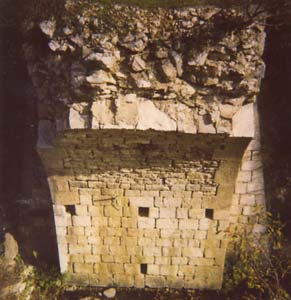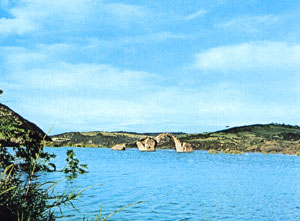 The road system in roman and medieval times
The road system in roman and medieval times
Roman roads, according to
ancient sources, appear to have been distributed along two parallel axes, one skirting the coast and the other running along the ridge of the Matese massif.
These two main thoroughfares were complemented by a cross-road that ran parallel with the course of the river Biferno, plus a road that led from Isernia-Aesernia,
through Venafro-Venafrum, to the Via Latina.
Roman roads tend to follow previous courses and often overlap ancient sheep-tracks. The Via Minucia, for example, coming from Castel di Sangro-Aufidena,
follows the Pescasseroli-Candela sheep-track and becomes the axis for new Roman urban settlements (Bojano-Bovianum, Sepino-Saepinum, Isernia-Aesernia).
With the fall of the Roman Empire the viae publicae ceased to be maintained and were gradually replaced by other routes that bear witness to the
widespread fragmentation of the territory.
The Traiano-Frentana, which is conventionally identified by the name of Litoranea (coastal road), stretched from the north to Larino-Larinum. Its course
is followed in part by the Aquila-Foggia sheep-track and the modern road system. The present state highway 17 follows to a large extent the Pescasseroli-Candela
sheep-track. A road connected Bojano-Bovianum with Larino-Larinum, passing through the ad Canales and ad Pyr(um) stations.
Remains of bridges still survive along these roads: the Limosano bridge, the Rotto bridge, the Giano Camense bridge, the bridge on the Sordo river and others. A
hump-backed triple-arch bridge (late 13th cent.) was recently submerged by the reservoir created by the Liscione dam on the river Biferno.
The main sources on the road systems are the Itinerarium Antonini Augusti, with detailed lists of connected towns and distances by road ; the tabula
Peutingeriana (12th century reproduction of a 4th century road map of the Roman Empire) and the Ravennati Anonymi Cosmographia.
 Il comune informa
Il comune informa 




